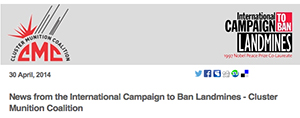Why the Ban
Until the 1990s, antipersonnel landmines had been used by most armed forces of the world, in one form or another, causing tens of thousands of casualties a year and creating many hardships for affected communities that could no longer safely access land, buildings, and natural resources.
The horrendous effect of landmines on communities throughout the world was witnessed by the founding member organizations of the ICBL, which joined forces in 1992 to address the problem. It soon became apparent that the only real solution to address the landmine crisis was a complete ban on antipersonnel mines. No technical changes or changes to the rules on their use could change the fact that an antipersonnel mine is inherently indiscriminate. Once planted it will never be able to tell the difference between a military and civilian footstep and will remain a threat to communities for decades to come.
The ICBL, in close partnership with a small number of states, the ICRC, and the UN, therefore put in motion what was later known as the “Ottawa Process” that led to the adoption of the Mine Ban Treaty in September 1997. The Mine Ban Treaty, which includes a comprehensive ban on all antipersonnel mines as well as several measures to redress the harm from past use, was adopted in Oslo (Norway) in September 1997, and opened for signature on 3 December 1997 in Ottawa (Canada.)
While numerous challenges remain, landmine use has dramatically dropped thanks to the Mine Ban Treaty, as has global production and trade. Additionally, tens of millions of antipersonnel mines have been destroyed, large areas of contaminated land have been cleared and returned to communities for safe use, and landmine victims’ rights and needs are receiving greater attention by affected states.






